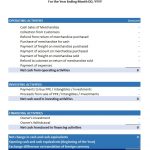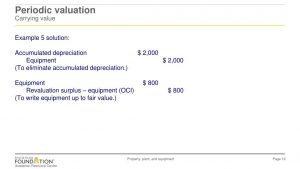Artificial Intelligence Advantages & Disadvantages

Experts also credit AI for handling repetitive tasks for humans both in their jobs and in their personal lives. As more and more computer systems incorporate AI into their operations, they can perform an increasing amount of lower-level and often boring jobs that consume an individual’s time. Everyday examples of AI’s handling of mundane work include robotic vacuums in the home and data collection in the office. An overreliance on AI technology could result in the loss of human influence — and a lack in human functioning — in some parts of society. Using AI in healthcare could result in reduced human empathy and reasoning, for instance. And applying generative AI for creative endeavors could diminish human creativity and emotional expression.
Privacy Concerns
AI still has numerous benefits, like organizing health data and powering self-driving cars. To get the most out of this promising technology, though, some argue that plenty of regulation is necessary. AI does present some significant dangers — from job displacement to security and privacy concerns — and encouraging awareness of issues helps us engage in conversations about AI’s legal, ethical, and societal implications. Our algorithm makes the predictions each week and then automatically rebalances the portfolio on what it believes to be the best mix of risk and return based on a huge amount of historical data. The important point to keep in mind is that AI in its current iteration is aiming to replace dangerous and repetitive work.
Job Displacement
The transition to a more automated world will be a major challenge for many countries as ensuring that workers have the skills and support needed to transition to new jobs is anything but easy. This is especially so because the impact of automation is more pronounced for low-skilled jobs, such as administrative tasks, construction or logistical services. Hence, the diffusion of robotics and AI contributes to the reduction in available jobs for the less-educated and has a negative effect on lower waged jobs. This disadvantage of artificial intelligence could lead to a growth in income polarization and mass unemployment.
AI technologies can run 24/7 without human intervention so that business operations can run continuously. Another of the benefits of artificial intelligence is that AI systems can automate boring or repetitive jobs (like data entry), freeing up employees’ bandwidth for higher-value work tasks and lowering the company’s payroll costs. It’s worth mentioning, however, that automation can have significant job loss implications for the workforce. For instance, some companies have transitioned to using digital assistants to triage employee reports, instead of delegating such tasks to a human resources department. Organizations will need to find ways to incorporate their existing workforce into new workflows enabled by productivity gains from the incorporation of AI into operations.
Similarly, AI itself does not have any human emotions or judgment, making it a useful tool in a variety of circumstances. For example, AI-enabled customer service chatbots won’t get flustered, pass judgment or become argumentative when dealing with angry or confused customers. That can help users resolve problems or get what they need more easily with AI than with humans, Kim said. In 1997, Gary Kasparov, reigning world chess champion and grand master, was defeated by IBM’s Deep Blue AI computer program, a huge step for AI researchers. Artificial intelligence (AI) is the use of “computers and machines to mimic the problem-solving and decision-making capabilities of the human mind,” according to IBM. Some recent AI progress may be overlooked by observers outside the field, but actually reflect dramatic strides in the underlying AI technologies, Littman says.
- Widening socioeconomic inequality sparked by AI-driven job loss is another cause for concern, revealing the class biases of how AI is applied.
- This is especially true for lower-skilled workers in the current labor force.
- Our team of AI experts are pushing the EU to shield your rights from the risks posed by AI.
- They’re able to process infinitely more information and consistently follow the rules to analyze data and make decisions — all of which make them far more likely to deliver accurate results nearly all the time.
Even if you do not do anything wrong or illegal, you set-off phrasal verb definition pictures pronunciation and usage notes may not want your personal information available at large. So is it really the case that you do not care about sharing your device’s location history? Would you really be comfortable if someone published her location data including predictions? The report, released on Thursday, Sept. 16, is structured to answer a set of 14 questions probing critical areas of AI development.

Police departments then double down on these communities, leading to over-policing and questions over whether self-proclaimed democracies can resist turning AI into an authoritarian weapon. The risk of AI development being dominated by a small number of large corporations and governments could exacerbate inequality and limit diversity in AI applications. Encouraging decentralized and collaborative AI development is key to avoiding a concentration of power.
High energy requirements and questions of sustainability
The compute power required for AI systems is high, and that’s driving explosive demands for energy. The World Economic Forum noted as much in a 2024 report, where it specifically called out generative AI systems for their use of “around 33 times more energy to complete a task than task-specific software would.” She and others said AI presents a number of ethical issues, from the presence of bias in a system a guide to nonprofit accounting for non-accountants to a lack of explainability, where no one understands how exactly AI produced certain results. AI can be taught to recognize human emotions such as frustration, but a machine cannot empathize and has no ability to feel.
As long as the power is turned on, algorithms can run 24 hours a day, 7 days a what is other comprehensive income week without needing a break. It’s a deterministic approach, akin to a recipe, where the computer executes step-by-step instructions to achieve the desired result. “And as long as people are fooled into thinking this is real content, it will be a problem.”
Automation of jobs, the spread of fake news and a dangerous arms race of AI-powered weaponry have been mentioned as some of the biggest dangers posed by AI. AI-driven automation has the potential to lead to job losses across various industries, particularly for low-skilled workers (although there is evidence that AI and other emerging technologies will create more jobs than it eliminates). Omdia projects that the global AI market will be worth USD 200 billion by 2028.¹ That means businesses should expect dependency on AI technologies to increase, with the complexity of enterprise IT systems increasing in kind.






